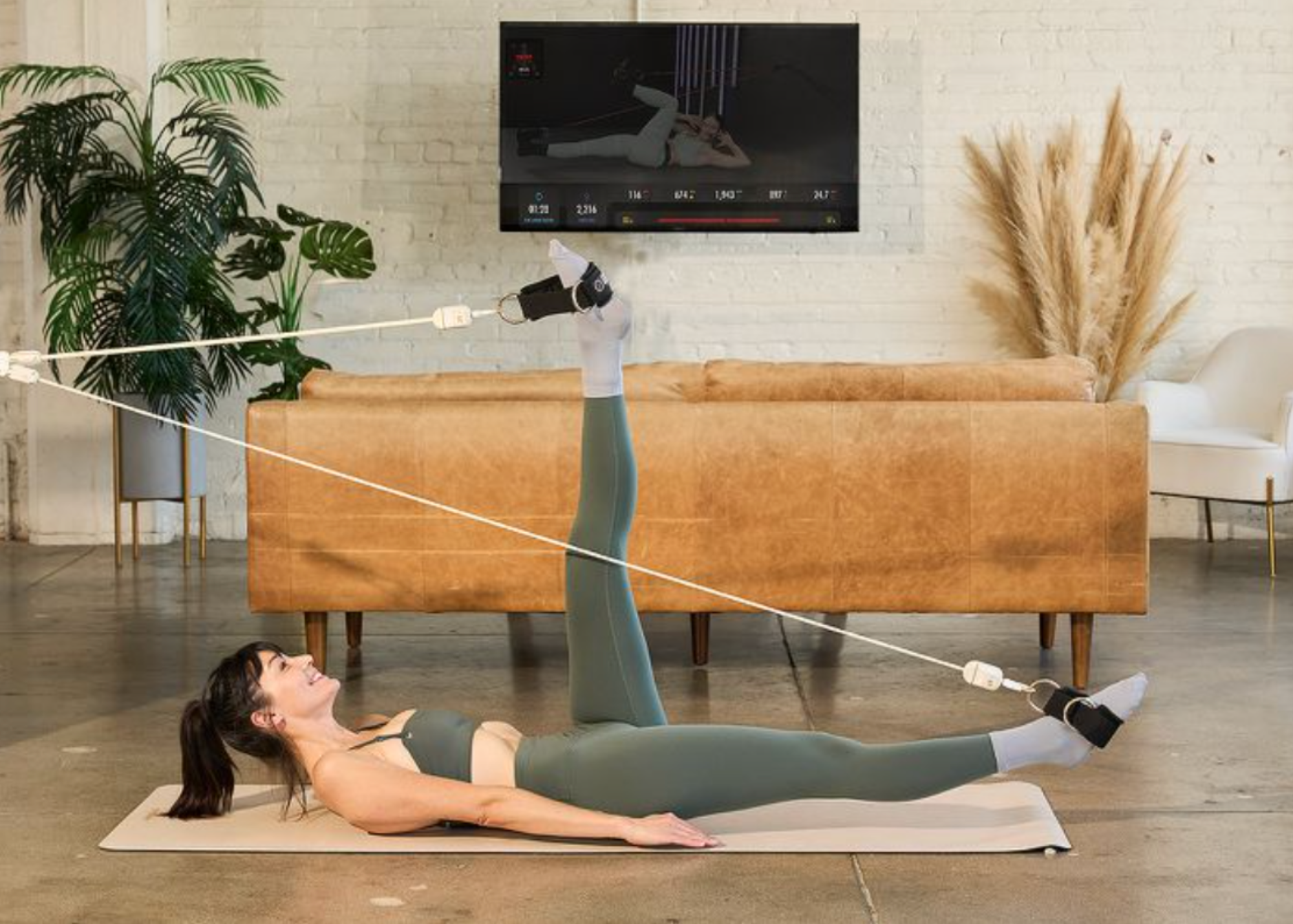Resistance bands are lighter, cheaper, and safer than free weights like dumbbells and thus are predominantly used for rehabilitation exercises. The better motion control and balance provided by resistance bands are excellent for targeting specific muscle groups. A complete upper body workout using resistance bands can often give equivalent benefits to weight lifting at a gym. However, the degree of impact on your upper body muscle groups will depend on how much stress you put on them.
Here we will discuss a balanced upper-body resistance band workout that you can do at home. But first, you must understand why resistance bands can be better for an upper-body workout than dumbbells.
Why Resistance Bands Should Be Preferred for Upper Body Workouts
First, resistance bands are low-impact and joint-friendly. Resistance bands do not stress your joints excessively, unlike machines and free weights. Additionally, resistance bands are better than free weights because they maintain constant tension throughout the movement. It helps activate the target muscles more efficiently. Furthermore, adjusting the resistance to progress the workouts is much easier as your muscles overcome the current resistance level.
Warm-up exercises
Before you start with upper body resistance band exercises, preparing your body for the workout is crucial. Warming up is essential to activate your cardiovascular system by increasing your body temperature. It also increases the blood flow to your muscles, which is required to support exercises and for faster recovery. A proper warm-up session before a workout can reduce the risk of muscle injury.
Here are two resistance band warm-up exercises to include in your routine.
1. Face pulls

Anchor the resistance band at the level of your face. Hold each end of the resistance band while facing the anchor point and take a few steps backward.
- Stretch out the arms in front of you to slight tension in the resistance band.
- Pull up the arms towards your face keeping your elbows up.
- Hold the position before returning to starting position.
- Do 10-15 reps.
2. Side bend

- Hold the resistance band in your arms.
- Move your arms above your head and slightly stretch the resistance band.
- Bend your upper body to the sides, alternating left and right.
Complete upper body resistance band workout
Resistance band exercises are low impact, which makes them ideal for home workouts. You can create a circuit training with upper body resistance band exercises for maximum benefits. Circuit training is when you rotate through several different exercises rapidly with minimal rest intervals in between.
1. Resistance Band Seated Row

- Sit with your back straight and loop the resistance band around your feet. Hold each end of the band firmly in your hands. Adjust the resistance band length such that you feel the tension in this position.
- Keeping the torso stationary, pull the band to your sides, moving elbows backward, keeping them close to your body.
- Squeeze your back muscles to engage them. Hold the position for a few seconds.
- Slowly release the band, reaching the start position.
- Do 12 reps for 2-3 sets.
Starting your upper body band workout with seated band rows engages the upper back and arms. This resistance band exercise targets four main upper body muscles groups- latissimus dorsi (middle back), trapezius (neck, shoulders, and upper back), rhomboids (between shoulder blades), and biceps brachii (front of the upper arm). You can also check out this detailed guide on how to do resistance band rows.
2. Overhead Press

- Stand firmly with your feet hip-width apart. Put the ends of the resistance band in your hands and keep your feet at the center of the band.
- With your palms facing out, extend the arms straight above your head. Ensure that your back and arms are straight.
- In a controlled motion, bring the arms back to your collarbone.
- Complete 15–20 reps of the overhead press in each set.
This exercise targets your shoulders, triceps, chest, and traps. The overhead press is an excellent compound push exercise.
3. Overhead triceps extension
- Stand with feet close together, standing in the middle of the resistance band.
- Move your hands behind your head, holding each end of the resistance band. Keep elbows close to your ears, palms facing each other. Keep knuckles touching each other for better grip. In this position, the band will run behind your body.
- Keeping the upper arms still, straighten the elbows extending your arms directly overhead. Keep your core tight and shoulder down to ensure your elbows are not flaring out.
- Hold the position for a few seconds when your arms are fully extended, then move back to starting position.
- Complete 15–20 reps in 2-3 sets.
This exercise targets your triceps in an isolation move. It is essential to prevent muscle imbalance by strengthening the triceps.
4. Band flye

- Loop the resistance band to an anchor.
- Firmly grab both ends of the resistance band, facing away from the anchor point.
- Standing straight with the core engaged, bring the arms out from the sides to make an arc meeting in the front of the chest.
- Arc back in control motion squeezing your pecs in the middle.
- Do four sets of 12 reps.
With this upper body resistance band exercise, you can target the pectoral muscles and strengthen the stabilizing muscles, such as transverse abdominis and erector spinae.
5. Resistance band bicep curls

- Stand straight, then move the right foot forward to hold the band. Hold the other end of the band with the right hand with the palm facing up.
- Pull the band towards your chest, bending the arm from the elbow. Keep the elbow closer to the side.
- Squeeze the bicep. You must feel the stress in the bicep muscles (adjust the resistance accordingly).
- Lower the arm back to the starting position.
- Do 8-10 reps before changing the side.
This workout targets your biceps and can be more challenging by not allowing the forearm to extend up.
These five upper-body resistance band exercises offer a complete upper-body workout. You should perform the entire workout with no (or minimal rest between 3-5 seconds), then rest for 30-60 seconds and repeat the whole workout a second time.
Cool-down exercises for faster recovery
The upper body resistance band workout must be followed by stretching exercises. Cooling down is essential to prevent injuries and promote recovery. Stretching helps you:
1. Prevent injury: The upper body workout we detailed above will put your muscles under stress. In response, the muscles in the upper body region will become tight. Cooling down with light exercises relaxes your muscles and brings down the heart rate.
2. Improve flexibility: Following up the upper body workout with stretching exercises improves flexibility. It can improve the range of motion and joint flexibility.
3. Promotes recovery: Cooling down after intensive workouts prevent delayed onset muscle soreness (DOMS), reduces inflammation, and promotes faster healing.
Here are two stretching exercises to cool down after a band upper body workout.
1. Shoulder and back resistance band stretch

- Hold the resistance band in both hands and keep the palms at arm's length from the body.
- Bring the arms to shoulder level, keeping them straight and extended out.
- Slowly pull the band apart by opening your arms.
- Retract the shoulder blades as you pull the band apart. This will relax the shoulders.
- Gradually move back to the starting position.
- Do 10-12 reps.
If you're looking for more effective resistance band exercises to strengthen your entire back or lower back, you might want to check out this guide created by our experts on various lower back resistance band exercises and entire back resistance band workout.
2. Shoulder and chest resistance band stretch
- Keep the resistance band at arm's length, then raise the band keeping your arms straight such that the band is above your head.
- Now extend your arms backward, rotating the shoulder blades to bring the resistance band behind your back.
- Now stretch the resistance band and bring the arms in front of your body back to the starting position.
- Repeat the movement in both directions.
- Do ten reps.
Improve your upper body resistance band workout with LIT AXIS™

LIT AXIS™ is the next generation of resistance bands that embeds technology in mechanical resistance bands. It's a portable smart resistance band training system that can make your upper body resistance band workouts highly accurate and easy to monitor.
~[[lit-axis-cherry]]
It’s up to 200 LBS resistance support can replace cable systems, free weights, and suspension trainers. The adjustable resistance levels allow you to perform 350+ exercises.

The sensors in LIT AXIS™ keep track of your resistance loads and reps while monitoring for any muscle imbalance to ensure injury prevention. It tracks your metrics and then customizes your workouts based on your goals. It's like personalized coaching at your fingertips. Learn more about LIT AXIS™.
Conclusion
You are not dependent on weights or machines for more muscular arms, shoulders, back, and chest. Resistance bands can provide a full upper-body workout with a much lower risk of injury and faster recovery. Follow the workout outlined in this guide for a stronger and more muscular upper body.





